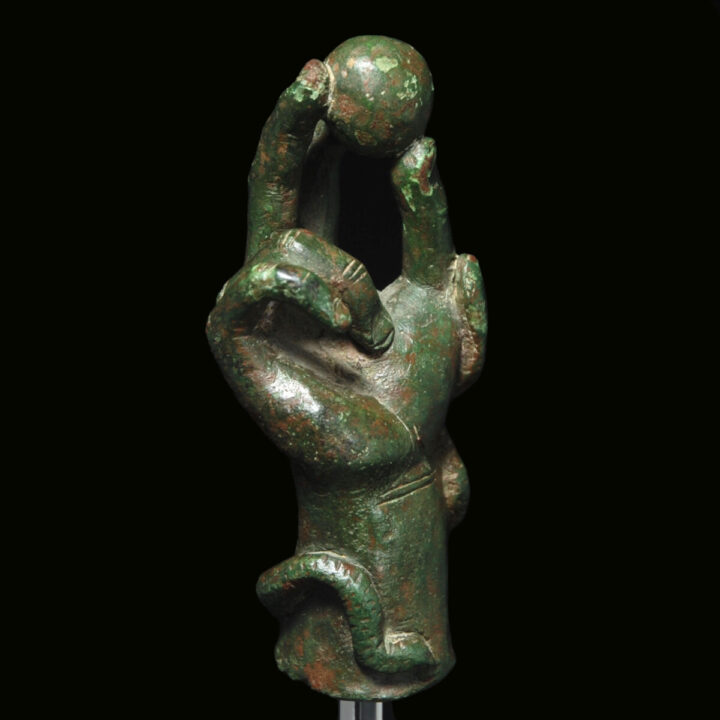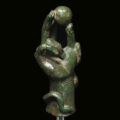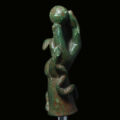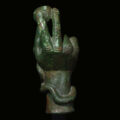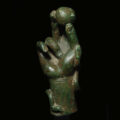Bronze Hand of the Sabazios Cult
Culture: Roman
Period: 2nd-3rd century A.D.
Material: Bronze
Dimensions: 12 cm high; 515 grams
Price: 6 000 Euro
Ref: 3598
Provenance: US private collection Arnold Peter Weiss, Rhode Island, acquired from Frank L. Kovacs Ancient Coins & Antiquities in San Mateo, California, in 1999.
Condition: Intact. In places with fine malachite patina. Minor patina spalling, especially on the index finger and the ball.
Description: Heavy bronze hand with a serpent and a ball, which was used in the Sabazios cult. The anatomically finely worked out hand with nails and limb folds has an opening in the lower arm, where it was affixed as a standard attachment on a wood staff and presented during processions. The serpent with a finely engraved skin winds around the wrist and rests its head on the thumb. It is closely associated with Sabazios, who is considered as the representative of the circle of nature, which every year blossoms and withered and re-blossoms. The serpent is the symbol for the constant renewal of life and nature. The finger position with the bent small- and ring finger, as well as the stretched out middle- and index finger, as well as thumb correspond to the “Benedictio Latina”, the blessing gesture, which is typical for Sabazios hands. Interesting is that the hand holds a ball, which are usually known for votive hands for Jupiter Dolichenus (see: Karin Guggisberg „Eine Votivhand für Jupiter Dolichenus aus Augst“, in: Jahresberichte aus Augst und Kaiseraugst, vol. 13, 1992, pages 121-128). It represents the globe, the cosmic omnipotence, which was associated with Sabazios. The Sabazios cult initially originates from Asia Minor and Thrace and spread through Roman legionnaires also in the western half of the empire. The cult rituals were orgiastic and exclusively took place at night, when also these Sabazios hands were used. See for the hand gesture and the symbols of the Sabazios hands: Susanne Berndt “The hand gesture and symbols of Sabazios”, in: “Opuscula Volume 11”, Stockholm 2018, p. 151-168. Mounted.



